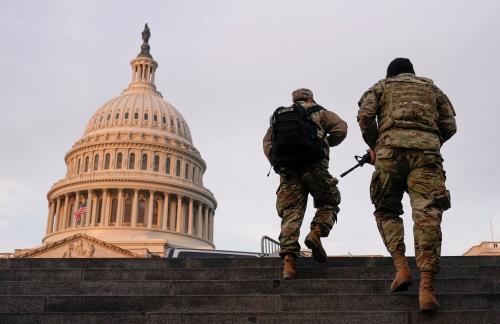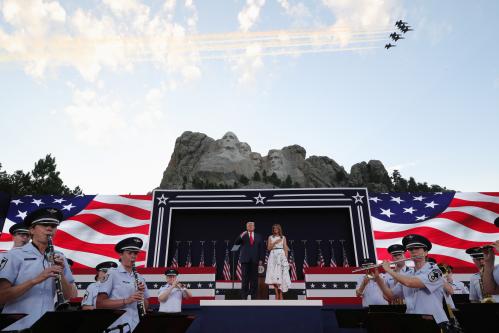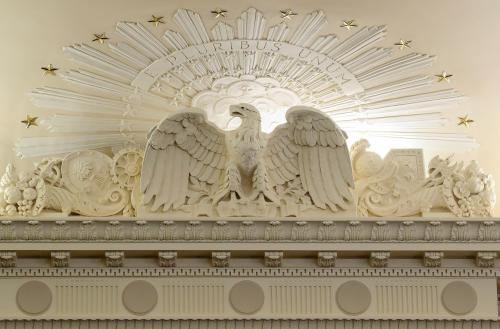Statues are seldom erected to losers. Statues are erected in celebration. The current disputes about statues of Confederate leaders are less about those individuals than what prompted their erection in the first place.
Normally, I write blogs on technology-related topics. But I have also written two books on the Civil War. Having studied and saluted Robert E. Lee’s military prowess, as well as his shortcomings, the fact of the matter is the secessionists lost their armed rebellion.
The statues at the center of today’s debate were erected not to celebrate the loss, but to perpetuate the myth of the so-called Lost Cause. A few decades after the end of the war, as incremental progress towards racial equality was being eked out, some Southerners sought to recast the war of secession as not about slavery, but about protecting a way of life. The fact that life revolved around slavery was conveniently obfuscated, but well understood. Statues to the leaders of the rebellion became a means of keeping its emotions alive.
Robert E. Lee, whose Charlottesville, Virginia statue is the current focal point, was a brilliant, but also flawed, tactician. He was blessed in the early years of the conflict with opposing generals who were seriously deficient. At Antietam and Chancellorsville, for instance, his brilliant victories owed as much to the failures of Union generals George McClellan and Joseph Hooker as to his own leadership. At Gettysburg, his flaws were highlighted on the first and third days and contributed greatly to sealing the Confederacy’s fate.
Yet, after the war Lee became the “marble man.” Like the flawless stone of his statues, his imperfections were overlooked because celebrating him (and others) kept the myth of the “righteous cause” and its unspoken underpinning alive in defeat.
Donald Trump is wrong in his obfuscating assertion that removing Confederate statues also condemns the memorials to George Washington and Thomas Jefferson because those men were both slaveholders. The Founding Fathers’ perpetuation of slavery for the sake of creating a new national union was this country’s Original Sin, no doubt about it. The man who wrote “All men are created equal” stands especially exposed for his hypocrisy. But these men were building as opposed to tearing down.
The structure the Founders created postponed the ultimate resolution of slavery. Yet it also created a peaceful path for the nation to later address the issue. The secessionist states chose another solution: withdrawal from that union and opening fire on it, beginning in Charleston harbor.
Six hundred thousand lives later, the war ended. But it did not end the emotion around the war’s root issue. The Lost Cause crusade—including its statue-building efforts—kept that emotion alive, but cloaked it in the garb of historical reverence. There was a simple message to General Lee from a member of Union general Grant’s staff (and a Native American) at the Appomattox surrender: “We are all Americans.” That message, however, was superseded by an organized effort to keep alive in bronze and marble that which had divided the nation.
“You’re changing history,” Donald Trump said. No sir, no one is changing history. The South lost; oppression was repudiated. The nation as a whole has tried to move on. The Lost Cause is a myth.
“You’re changing culture,” Mr. Trump went on to say. No again. The culture that motivated the war may continue in the hearts of a few who converged at Charlottesville, but collectively, our nation is better than that. Our culture is one of opposing hate and oppression and our leaders speaking out forcefully against such darkness.
Buried in the same newspaper that reported on Mr. Trump’s re-revision of his position on Charlottesville was a story about the Republican governor of Maryland’s decision to remove the statue of Marylander Roger B. Taney from the statehouse grounds. Taney was the author of the 1857 Supreme Court Dred Scott decision that African-American slaves were not citizens. “While we cannot hide from our history—nor should we,” Governor Larry Hogan said, “the time has come to make clear the difference between properly acknowledging our past and glorifying the darkest chapters of our history.” It was a thoughtful commentary, so markedly different from that emanating from our highest elected leader.
As the end of the Civil War approached, President Lincoln used his second inaugural address to issue a challenge to “bind up the nation’s wounds.” It is a never-ending challenge that continues 152 years later and continues to cry out for leadership.
The Brookings Institution is committed to quality, independence, and impact.
We are supported by a diverse array of funders. In line with our values and policies, each Brookings publication represents the sole views of its author(s).











Commentary
Of marble men and myths
August 16, 2017